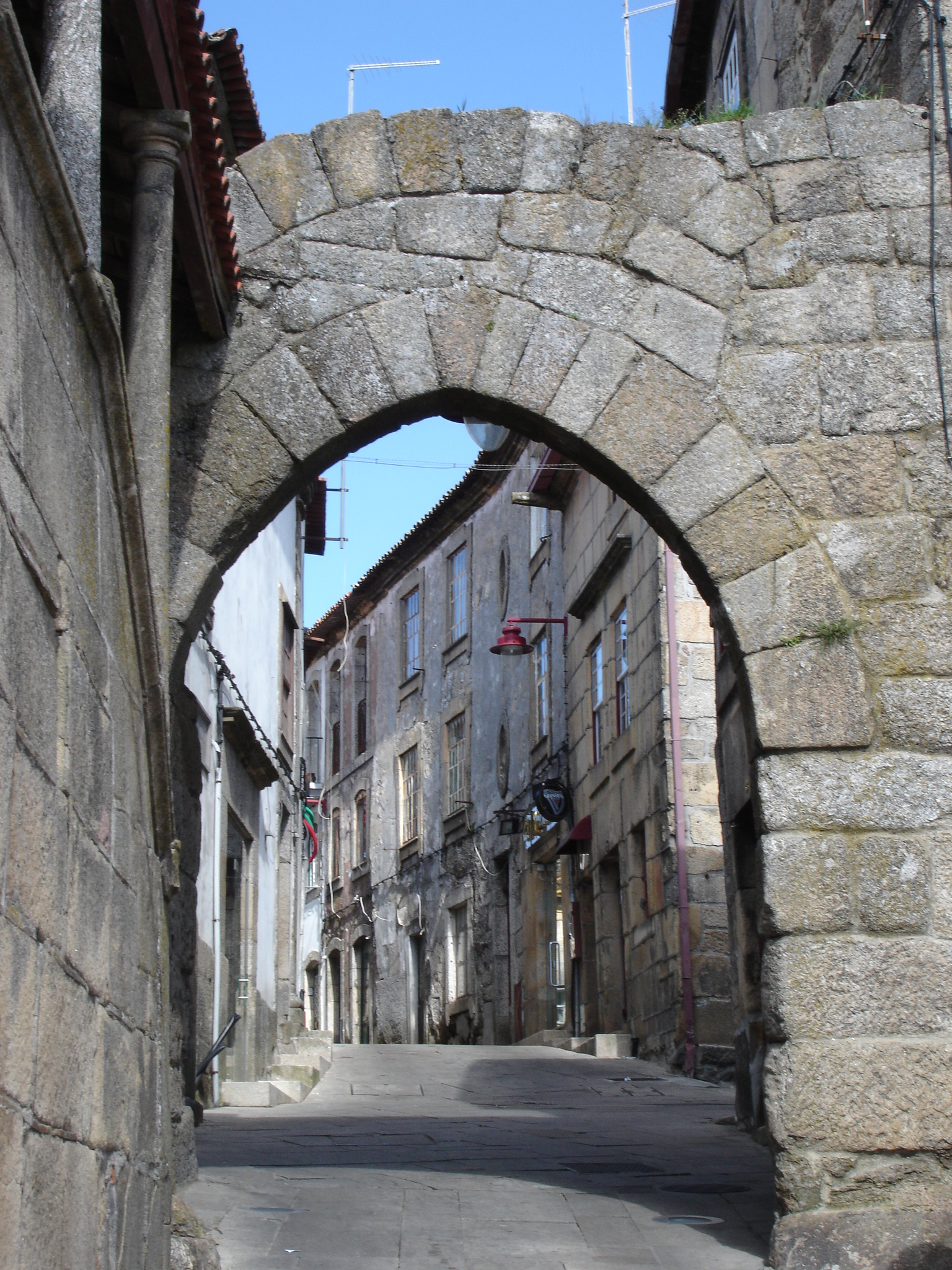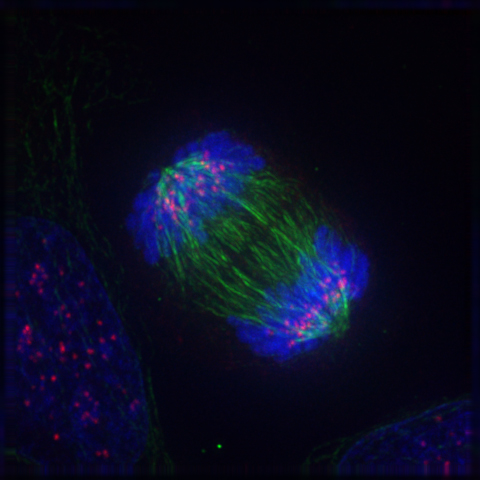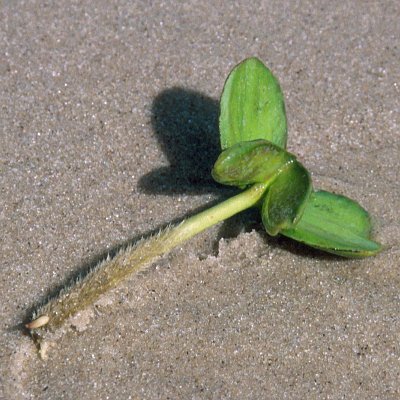|
Abílio Fernandes
Abílio Fernandes (19 October 1906, Guarda, Portugal – 16 October 1994, Coimbra), was a Portuguese botanist and taxonomist from the Botanical Institute at the University of Coimbra who was married to Rosette Mercedes Saraiva Batarda (1916–2005), another Portuguese botanist and taxonomist. Fernandes was a student of Aurélio Quintanilha (1892–1987), botanist and geneticist. Career Fernandes is noted for his work on Amaryllidaceae, and compiling floras of Portugal, Macaronesia and Tropical Africa. He was the son of José Fernandes (1880-) and Maria Augusta Fernandes (1880–). Fernandes was Quintanilha's student during the academic year 1926–27 and was invited to become teaching assistant in 1927. He became interested in the number and form of chromosomes in different species, later specialising in cyto-systematics, founding and becoming head of a research programme on cytotaxonomy at the University of Coimbra, where he stayed for the remainder of his career. Quintanilha ... [...More Info...] [...Related Items...] OR: [Wikipedia] [Google] [Baidu] |
Guarda, Portugal
Guarda () is a city and a municipality in the District of Guarda and the capital of the Beiras e Serra da Estrela sub-region in Norte Region, Portugal, northern Portugal. The population in 2021 was 40,126, in an area of with 31,224 inhabitants in the city proper in 2006. Founded by King Sancho I of Portugal, Sancho I in 1199, Guarda is the city located at the highest altitude in Portugal ( Height above sea level, a.s.l.) and one of the most important cities in the Portuguese region of Beira Alta Province, Beira Alta. Serra da Estrela, the highest mountain range in continental Portugal, is partially located in the district. The city is served by national and international trains on the Beira Alta and Baixa railway lines. The present mayor is Sérgio Costa, as an independent. The municipal holiday is November 27. Guarda is known as the "city of the five F's": ''Farta'', ''Forte'', ''Fria'', ''Fiel'' e ''Formosa'' - abundant (or totally satisfied), strong, cold, loyal and beautiful. ... [...More Info...] [...Related Items...] OR: [Wikipedia] [Google] [Baidu] |
Cytotaxonomy
Cytotaxonomy is the classification of organisms using comparative studies of Chromosome, chromosomes during meosis. Description Cytotaxonomy is a branch of taxonomy that uses the characteristics of cellular structures to classify organisms. In cytotaxonomy, the chromosomal configuration of an organism is the most widely used parameter to infer the relationship between two organisms. The inference of species relationships is based on the assumption that closely related species share similar characteristics in their chromosomal setup (referred to as karyotype). By analysing the similarities and differences in the chromosomes, karyotype evolution and species evolution can be reconstructed. The number, structure, and behaviour of chromosomes is of great value in Taxonomy (biology), taxonomy, with chromosome number being the most widely used and quoted character. Chromosome numbers are usually determined at the metaphase stage during mitosis. Usually, the diploid chromosome number (2n) ... [...More Info...] [...Related Items...] OR: [Wikipedia] [Google] [Baidu] |
People From Guarda, Portugal
The term "the people" refers to the public or common mass of people of a polity. As such it is a concept of human rights law, international law as well as constitutional law, particularly used for claims of popular sovereignty. In contrast, a people is any plurality of persons considered as a whole. Used in politics and law, the term "a people" refers to the collective or community of an ethnic group or nation. Concepts Legal Chapter One, Article One of the Charter of the United Nations states that "peoples" have the right to self-determination. Though the mere status as peoples and the right to self-determination, as for example in the case of Indigenous peoples (''peoples'', as in all groups of indigenous people, not merely all indigenous persons as in ''indigenous people''), does not automatically provide for independent sovereignty and therefore secession. Indeed, judge Ivor Jennings identified the inherent problems in the right of "peoples" to self-determination, as i ... [...More Info...] [...Related Items...] OR: [Wikipedia] [Google] [Baidu] |
Portuguese Taxonomists
Portuguese may refer to: * anything of, from, or related to the country and nation of Portugal ** Portuguese cuisine, traditional foods ** Portuguese language, a Romance language *** Portuguese dialects, variants of the Portuguese language ** Portuguese man o' war, a dangerous marine animal ** Portuguese people, an ethnic group See also * * ''Sonnets from the Portuguese'' * "A Portuguesa", the national anthem of Portugal * Lusofonia * Lusitania Lusitania (; ) was an ancient Iberian Roman province encompassing most of modern-day Portugal (south of the Douro River) and a large portion of western Spain (the present Extremadura and Province of Salamanca). Romans named the region after th ... * {{disambiguation Language and nationality disambiguation pages ... [...More Info...] [...Related Items...] OR: [Wikipedia] [Google] [Baidu] |
Lamiaceae
The Lamiaceae ( ) or Labiatae are a family (biology), family of flowering plants commonly known as the mint, deadnettle, or sage family. Many of the plants are aromatic in all parts and include widely used culinary herbs like basil (herb), basil, mentha, mint, rosemary, Salvia officinalis, sage, savory (herb), savory, marjoram, oregano, Hyssopus officinalis, hyssop, thyme, lavender, and perilla, as well as traditional medicines such as catnip, ''Salvia'', Monarda, bee balm, Leonotis leonurus, wild dagga, and Leonurus japonicus, oriental motherwort. Some species are shrubs, trees (such as teak), or, rarely, vines. Many members of the family are widely cultivated, not only for their aromatic qualities, but also their ease of cultivation, since they are readily propagated by stem cuttings. Besides those grown for their edible leaves, some are grown for decorative foliage. Others are grown for seed, such as ''Salvia hispanica'' (chia), or for their edible tubers, such as ''Plectr ... [...More Info...] [...Related Items...] OR: [Wikipedia] [Google] [Baidu] |
Verbenaceae
The Verbenaceae ( ), the verbena family or vervain family, is a family of mainly tropical flowering plants. It contains trees, shrubs, and herbs notable for heads, spikes, or clusters of small flowers, many of which have an aromatic smell. The family Verbenaceae includes 32 genera and 800 species. Phylogenetic studies have shown that numerous genera traditionally classified in Verbenaceae belong instead in Lamiaceae. The mangrove genus ''Avicennia'', sometimes placed in the Verbenaceae or in its own family, Avicenniaceae, has been placed in the Acanthaceae. Economically important Verbenaceae include: * Lemon verbena (''Aloysia triphylla''), grown for aroma or flavoring * Verbenas or vervains (''Verbena''), some used in herbalism, others grown in gardens Taxonomy Tribes and genera in the family and their estimated species numbers: Casselieae (Schauer) Tronc. * ''Casselia'' Nees & Mart. - 6 species * ''Parodianthus'' Tronc. - 2 species * ''Tamonea'' Aubl. - 6 species C ... [...More Info...] [...Related Items...] OR: [Wikipedia] [Google] [Baidu] |
Avicenniaceae
''Avicennia'' is a genus of flowering plants currently placed in the bear's breeches family, Acanthaceae. It contains mangrove trees, which occur in the intertidal zones of estuarine areas and are characterized by its "pencil roots", which are aerial roots. They are also commonly known as ''api api'', which in the Malay language means "fires", a reference to the fact that fireflies often congregate on these trees. Species of ''Avicennia'' occur worldwide south of the Tropic of Cancer. The taxonomic placement of ''Avicennia'' is contentious. In some classifications, it has been placed in the family Verbenaceae, but more recently has been placed by some botanists in the monogeneric family Avicenniaceae. Recent phylogenetic studies have suggested that ''Avicennia'' is derived from within Acanthaceae, and the genus is included in that family in the Angiosperm Phylogeny Group system. Designation of species is made difficult by the great variations in form of '' Avicennia mari ... [...More Info...] [...Related Items...] OR: [Wikipedia] [Google] [Baidu] |
Flora Zambesiaca
''Flora Zambesiaca'' is an ongoing botanical project aimed at achieving a full account of the flowering plants and ferns of the Zambezi River basin covering Zambia, Malawi, Mozambique, Zimbabwe, Botswana and the Caprivi Strip, and is published by the Royal Botanic Gardens, Kew. The work is published in parts or whole volumes as and when the relevant families are completed, and is currently (2012) over the halfway mark. Some 24 500 plant species have been described so far. The majority of the line illustration plates in the first volume were by Miss L. M. Ripley and Miss G. W. Dalby. The ''Flora Zambesiaca'' project was set in motion in 1950 by Arthur Wallis Exell when he returned to the British Museum from his wartime activities with the Government Communications Headquarters at Bletchley Park - he was co-editor of ''Flora Zambesiaca'' from 1962 onwards. The present survey is under the editorship of Jonathan Timberlake who works in the Herbarium at the Royal Botanic Gardens, Kew. ... [...More Info...] [...Related Items...] OR: [Wikipedia] [Google] [Baidu] |
Cytogenetics
Cytogenetics is essentially a branch of genetics, but is also a part of cell biology/cytology (a subdivision of human anatomy), that is concerned with how the chromosomes relate to cell behaviour, particularly to their behaviour during mitosis and meiosis. Techniques used include Karyotype, karyotyping, analysis of G banding, G-banded chromosomes, other cytogenetic banding techniques, as well as molecular cytogenetics such as Fluorescence in situ hybridization, fluorescence ''in situ'' hybridization (FISH) and comparative genomic hybridization (CGH). History Beginnings Chromosomes were first observed in plant cells by Carl Nägeli in 1842. Their behavior in animal (salamander) cells was described by Walther Flemming, the discoverer of mitosis, in 1882. The name was coined by another German anatomist, Heinrich Wilhelm Gottfried von Waldeyer-Hartz, von Waldeyer in 1888. The next stage took place after the development of genetics in the early 20th century, when it was appreciated ... [...More Info...] [...Related Items...] OR: [Wikipedia] [Google] [Baidu] |
Tropical Africa
The Afrotropical realm is one of the Earth's eight biogeographic realms. It includes Sub-Saharan Africa, the southern Arabian Peninsula, the island of Madagascar, and the islands of the western Indian Ocean. It was formerly known as the Ethiopian Zone or Ethiopian Region. Major ecological regions Most of the Afrotropical realm, except for Africa's southern tip, has a tropical climate. A broad belt of deserts, including the Atlantic and Sahara deserts of northern Africa and the Arabian Desert of the Arabian Peninsula, separates the Afrotropic from the Palearctic realm, which includes northern Africa and temperate Eurasia. Sahel and Sudan South of the Sahara, two belts of tropical grassland and savanna run east and west across the continent, from the Atlantic Ocean to the Ethiopian Highlands. Immediately south of the Sahara lies the Sahel belt, a transitional zone of semi-arid short grassland and vachellia savanna. Rainfall increases further south in the Sudanian Savanna, ... [...More Info...] [...Related Items...] OR: [Wikipedia] [Google] [Baidu] |
Coimbra
Coimbra (, also , , or ), officially the City of Coimbra (), is a city and a concelho, municipality in Portugal. The population of the municipality at the 2021 census was 140,796, in an area of . The fourth-largest agglomerated urban area in Portugal after Lisbon Metropolitan Area, Lisbon, Porto Metropolitan Area, Porto, and Braga, it is the largest city of the Coimbra (district), district of Coimbra and the Centro Region, Portugal, Centro Region. About 460,000 people live in the Região de Coimbra, comprising 19 municipalities and extending into an area of . Among the many archaeological structures dating back to the Roman Empire, Roman era, when Coimbra was the settlement of Aeminium, are its well-preserved aqueduct (watercourse), aqueduct and cryptoporticus. Similarly, buildings from the period when Coimbra was the capital of Portugal (from 1131 to 1255) still remain. During the late Middle Ages, with its decline as the political centre of the Kingdom of Portugal, Coimbra beg ... [...More Info...] [...Related Items...] OR: [Wikipedia] [Google] [Baidu] |




